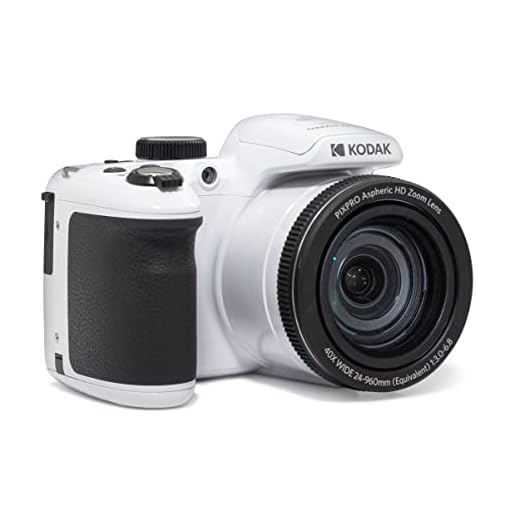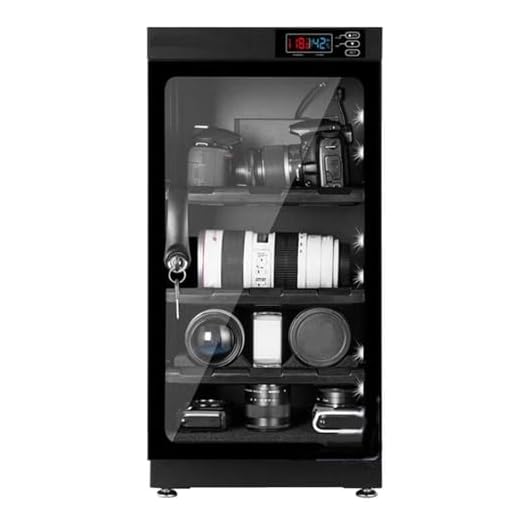




Have you ever wondered what makes a digital camera tick? At the core of every digital camera lies a complex system of technology that captures the world around us in stunning detail. This system, often referred to as the “heart” of the camera, is what transforms light into digital images that we can cherish and share.
The heart of a digital camera is its image sensor. This sensor is the component responsible for converting light into electrical signals, which are then processed and stored as digital data. The type and quality of the image sensor greatly impact the overall performance and image quality of the camera.
Understanding the heart of the digital camera is essential for anyone looking to delve into the world of photography and digital imaging. By grasping the inner workings of this crucial component, we can better appreciate the art and science behind capturing moments and memories in the digital age.
The Core Technology of Digital Cameras
At the heart of every digital camera lies a powerful image sensor that captures light and converts it into digital data. The two most common types of image sensors used in digital cameras are CMOS (Complementary Metal-Oxide-Semiconductor) and CCD (Charge-Coupled Device) sensors.
CMOS Sensors
CMOS sensors are widely used in modern digital cameras due to their low power consumption, high speed, and ability to integrate additional functionalities on the same chip. These sensors use a grid of pixels to capture light and convert it into electrical signals. Each pixel corresponds to a specific color channel (red, green, or blue) and together they create a full-color image.
CCD Sensors
CCD sensors, although less common in modern digital cameras, offer excellent image quality and low noise levels. These sensors use a series of capacitors to capture light and convert it into electrical signals. While CCD sensors are known for their high image quality, they tend to consume more power and are slower compared to CMOS sensors.
Both CMOS and CCD sensors play a crucial role in determining the image quality, performance, and features of a digital camera. Manufacturers often choose the sensor type based on factors such as cost, power consumption, and desired image quality.
The Image Sensor in Cameras
The heart of a digital camera is its image sensor. The image sensor is a crucial component that captures light and converts it into digital signals to create images. There are two main types of image sensors used in digital cameras: CCD (Charge-Coupled Device) and CMOS (Complementary Metal-Oxide-Semiconductor).
CCD sensors have been traditionally used in digital cameras and offer high-quality images with low noise levels. They are known for their excellent dynamic range and color accuracy. However, CCD sensors consume more power and are more expensive to manufacture.
On the other hand, CMOS sensors are becoming increasingly popular due to their lower power consumption, faster readout speeds, and lower cost. CMOS sensors also allow for more integration of other camera functions on the same chip, such as image processing.
Both CCD and CMOS sensors have their advantages and disadvantages, and the choice between them often depends on the specific requirements of the camera and the intended use. Ultimately, the image sensor plays a critical role in determining the image quality and performance of a digital camera.
The Role of Image Processor
The image processor is the brain of a digital camera, responsible for processing the data captured by the image sensor. It plays a crucial role in transforming raw image data into a usable image file, adjusting parameters such as color, exposure, and sharpness.
Key Functions:
The image processor performs tasks like noise reduction, image compression, and color correction to enhance the quality of the final image. It also handles functions like white balance adjustment, autofocus processing, and image stabilization.
Overall, the image processor is essential for optimizing and enhancing the digital images captured by the camera, ensuring high-quality output.
The Importance of Lens in Photography
When it comes to photography, the lens is one of the most crucial components of a camera. It plays a vital role in determining the quality of the images captured. A high-quality lens can make a significant difference in the sharpness, clarity, and overall look of a photo.
Key Factors to Consider:
- Aperture: The aperture of a lens controls the amount of light that enters the camera, affecting the exposure and depth of field of the image.
- Focal Length: The focal length of a lens determines the magnification and angle of view of the image. Different focal lengths are suitable for various types of photography.
- Image Stabilization: Some lenses come with image stabilization technology, which helps reduce camera shake and ensure sharper images, especially in low-light conditions.
Investing in a good quality lens can elevate your photography to the next level, allowing you to capture stunning and professional-looking images. It’s essential to choose the right lens for your specific photography needs and style to achieve the best results.
The Functionality of Display Screen
The display screen is a crucial component of a digital camera that allows users to view and review their captured images and videos. It serves as a window into the world of photography, providing a real-time preview of the scene being captured.
Modern digital cameras are equipped with high-resolution LCD screens that offer vibrant colors and sharp details, making it easier for photographers to compose their shots and make adjustments to settings. The display screen also displays important information such as exposure settings, battery life, and shooting mode.
Benefits of Display Screen:
- Instant review of captured images
- Easy access to camera settings
- Helps in composing shots accurately
Features of Display Screen:
| Resolution | High-resolution screens offer better image quality |
| Touchscreen | Some cameras have touchscreen displays for intuitive navigation |
| Articulating Screen | Articulating screens can be tilted or swiveled for shooting at different angles |
The Power Source of Cameras
One of the most essential components of a digital camera is its power source. Without a reliable power supply, the camera would not be able to function properly. There are several types of power sources used in cameras:
- Rechargeable Batteries: Many digital cameras come with rechargeable lithium-ion batteries. These batteries are convenient as they can be recharged multiple times and are environmentally friendly.
- AA Batteries: Some cameras use AA batteries as their power source. While convenient in terms of availability, AA batteries need to be replaced frequently.
- AC Power Adapter: Cameras can also be powered directly from an AC power source using an adapter. This is useful for studio photography or extended shooting sessions.
Choosing the right power source for your camera depends on your usage and preferences. It’s important to have a reliable power supply to ensure that you never miss a perfect shot.
The Storage Solutions for Digital Images
One of the key components of a digital camera is its storage solution for storing the images that are captured. There are several options available for storing digital images, each with its own advantages and disadvantages.
1. Memory Cards
Memory cards are the most common storage solution for digital cameras. They come in various formats, such as SD, CF, and MicroSD, and offer different storage capacities. Memory cards are portable, easy to use, and can be easily swapped out for additional storage.
2. Internal Memory
Some digital cameras come with built-in internal memory for storing images. While internal memory is convenient as it eliminates the need for a separate memory card, it usually has limited storage capacity compared to memory cards. It is important to regularly transfer images from the internal memory to a computer or external storage device to free up space.
Ultimately, the choice of storage solution for digital images depends on individual preferences and requirements, such as storage capacity, portability, and ease of use.
FAQ
What is the main function of the digital camera’s heart?
The heart of a digital camera is its image sensor. The image sensor captures the light that enters the camera and converts it into a digital image. It is essentially the “eye” of the camera, responsible for creating the photo or video.
How does the heart of a digital camera differ from a film camera?
The heart of a digital camera, the image sensor, differs from a film camera in that it captures light electronically and converts it into a digital image, while a film camera uses a physical film to record the image. This difference in technology is what sets digital cameras apart from their film counterparts.
What are the types of image sensors that can be found in the heart of a digital camera?
There are two main types of image sensors found in digital cameras: CCD (Charge-Coupled Device) and CMOS (Complementary Metal-Oxide-Semiconductor). Both types have their strengths and weaknesses, with CMOS sensors generally being more power-efficient and less expensive to produce, while CCD sensors often offer higher image quality.
How important is the heart of a digital camera in determining image quality?
The heart of a digital camera, the image sensor, plays a crucial role in determining image quality. The size, resolution, and sensitivity of the image sensor all impact the final image produced by the camera. A high-quality image sensor can result in sharper, clearer photos with better color reproduction, while a lower-quality sensor may produce grainy or noisy images.









